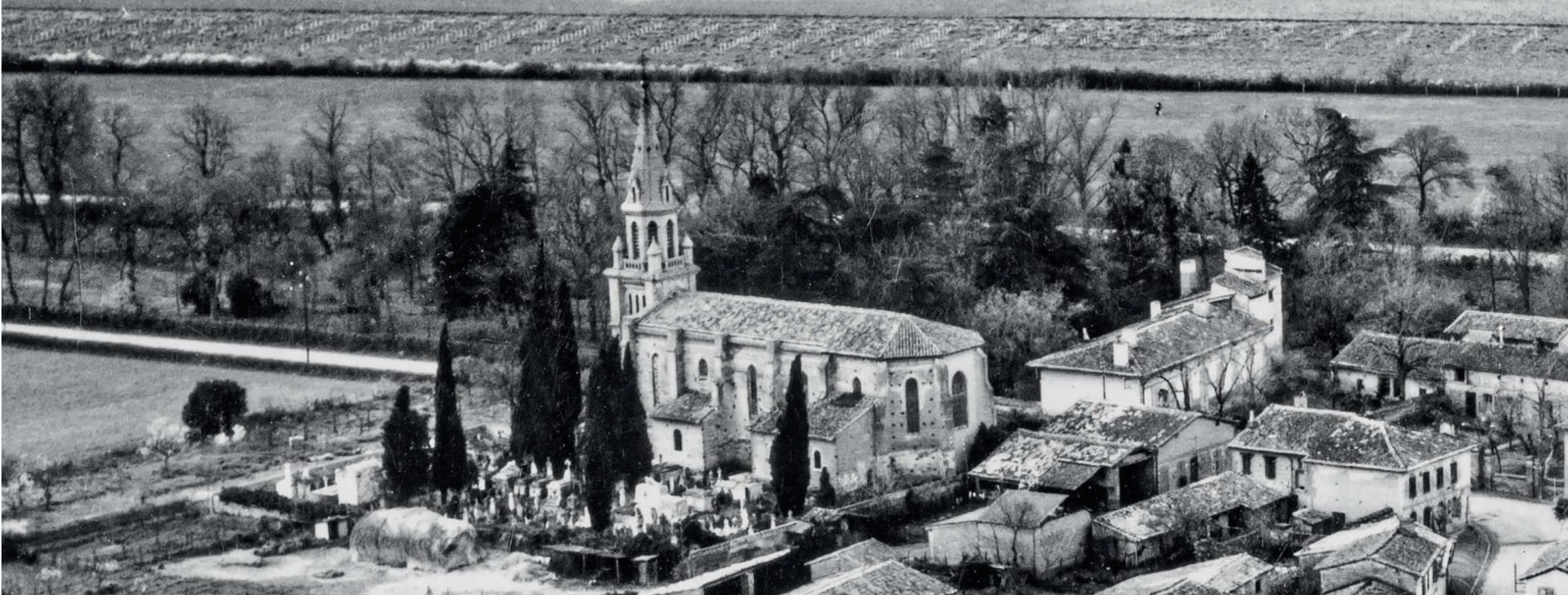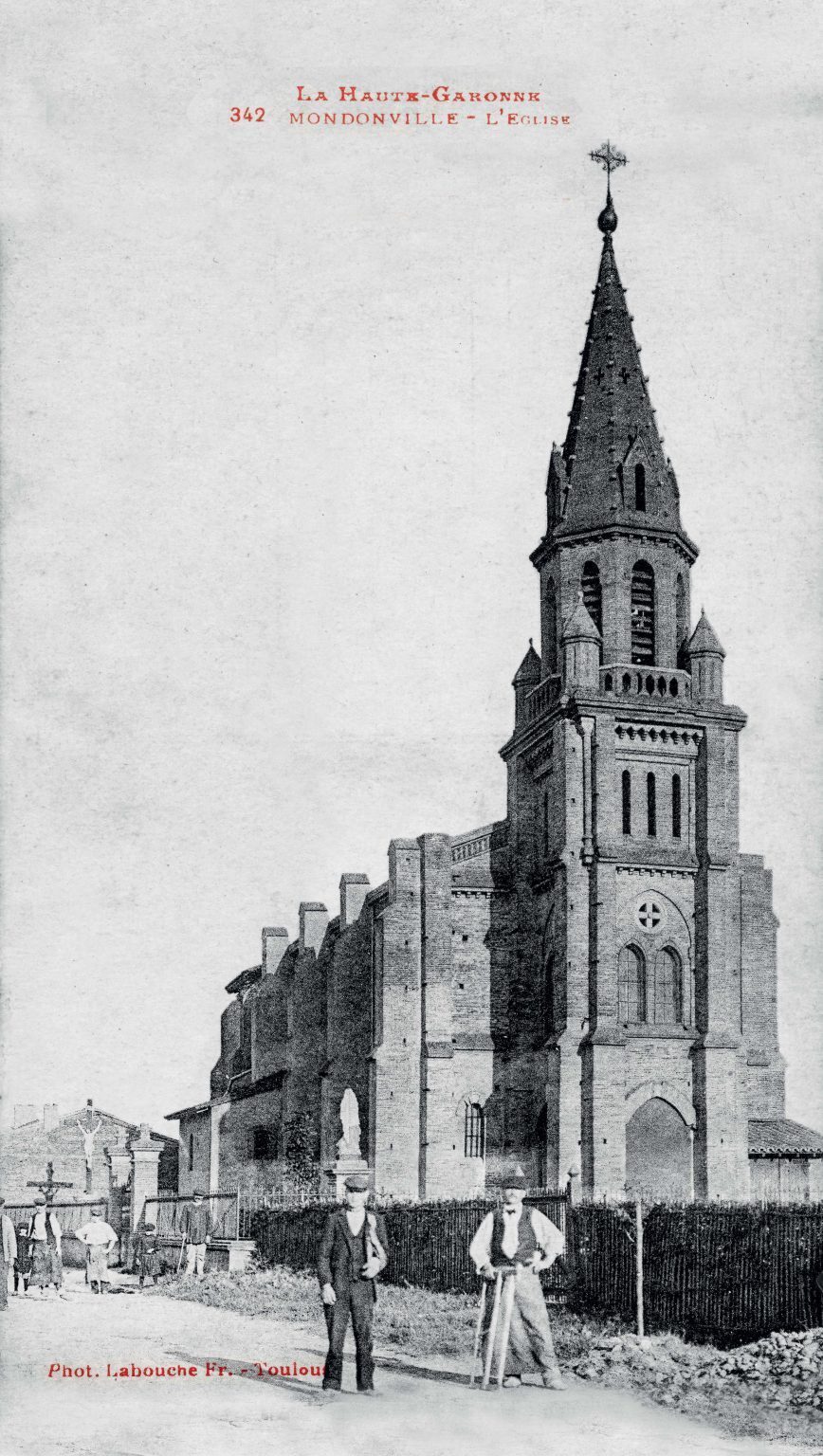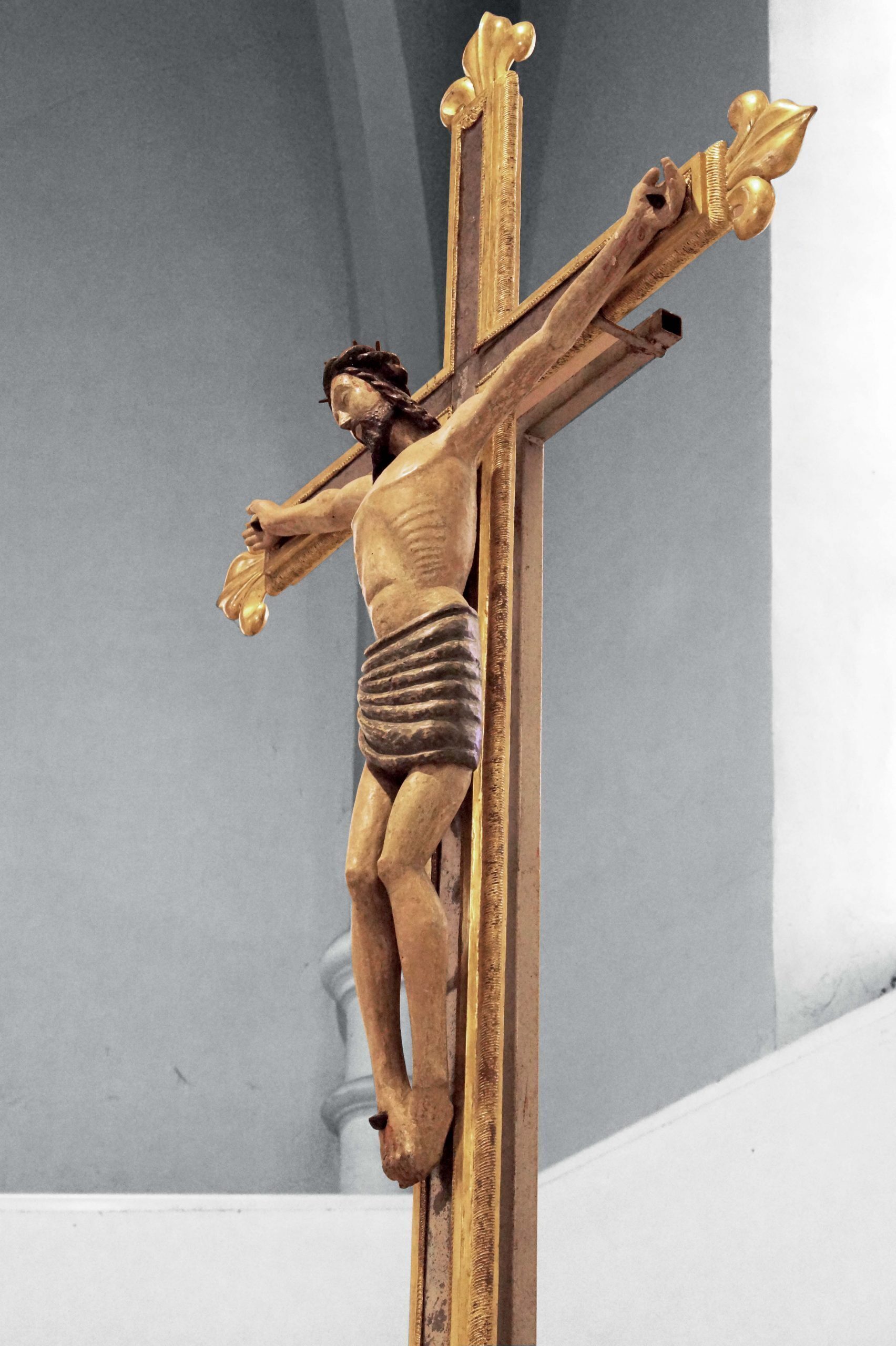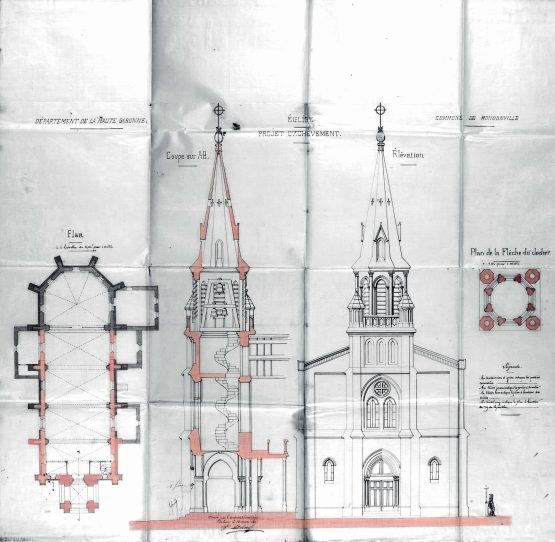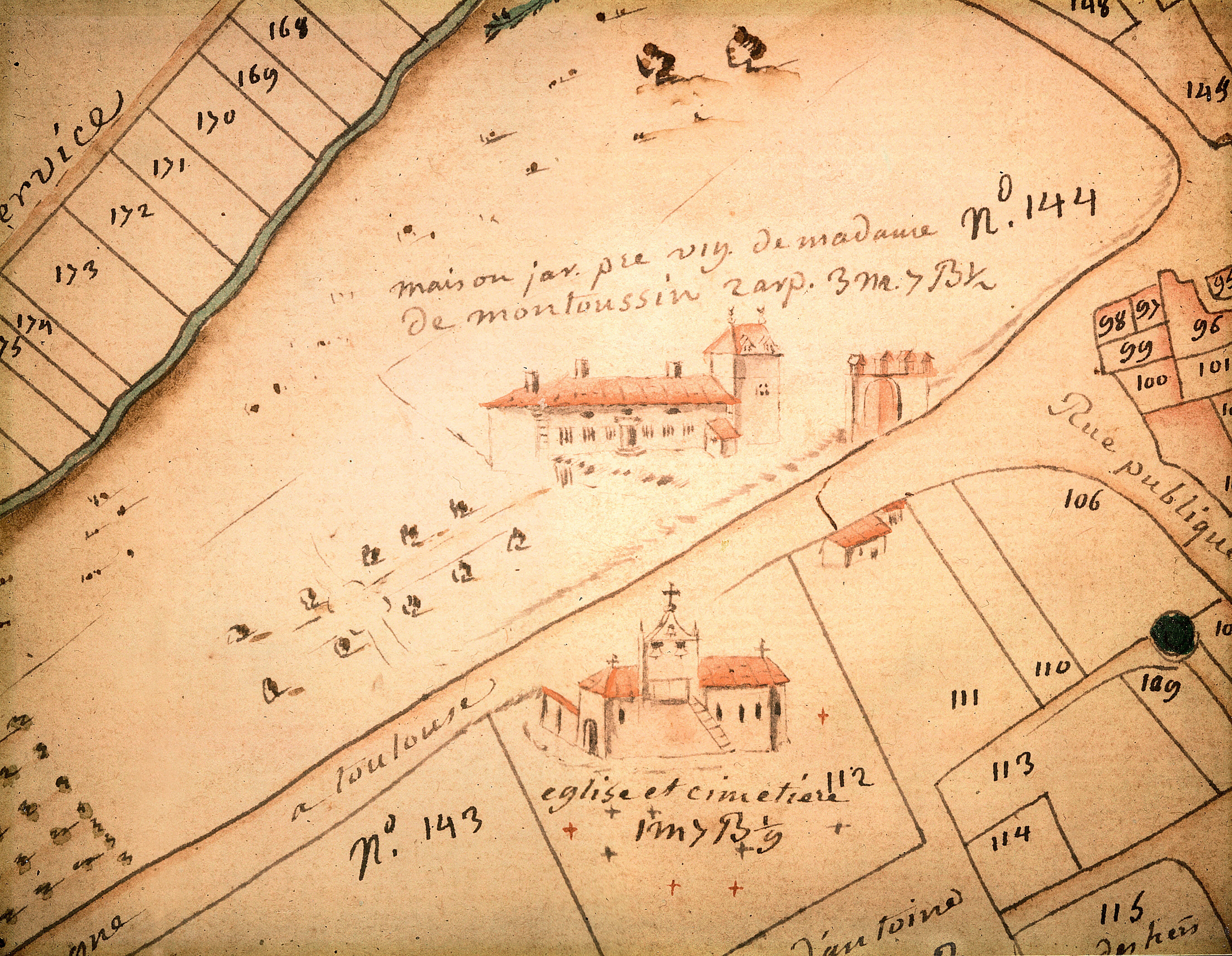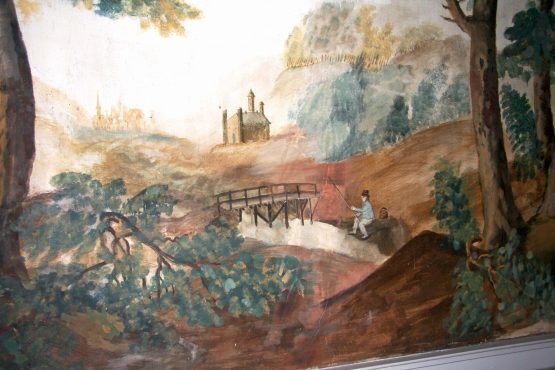The Church of Saint Peter in Chains
There is a mention of a church in Mondonville dating back to the early 12th century. In the 16th century the church had a bell-gable in the traditional Toulousain style, which allowed the bells to be heard far across the countryside. A few Romanesque elements from the original construction are still extant on the wall adjacent to the churchyard. The Abbé Emile Espagnat, who was the Mondonville parish priest in 1883, described the old church as “low, damp, dark and far too small for the 530 residents”; so he announced he intended to modify the edifice, which was indeed rebuilt in 1886.
Inside can be seen a wood Christ on the Cross, a motif of the Gothic tradition celebrating Christ as Man of Sorrows. The original cross was damaged by time and was replaced in the early 20th century.
Outside the church stands the statue of Our Lady of the Fields (J. Lefèvre 1875), which bears witness to the presence of a mission in Mondonville in 1875. This Virgin with Child recalls the Immaculate Conception as confirmed by the Lourdes apparitions. With its ornaments of flowers, fruit and ears of corn, it brings to mind how rural Mondonville was in the late 19th century.
The Saint-Paul Manor
The mansion shows on the urbarium from 1761 (see ill. #1). The urbarium was drawn by hand by a land surveyor appointed under Louis the XV and is, in effect, the first land register of the village. It identifies the building as the property of Madame de Montoussin, who is named in the notary’s register as “Lady of the Mondonville Manor.” The place then became the property of the Saint-Paul family, who owned the title “co-lords of Mondonville.” They lived in the manor for over 160 years and it is named after them.
It is one of the oldest buildings in Mondonville and comprises a large oblong house with a timber-framed tower that was later turned into a dovecote and is sometimes called the Gascon Tower. Wall paintings from the late 19th century covered three sides of the room that was probably used as a drawing-room (see ill. #2). In 2017, the whole estate was turned into flats by a developer.
In the western part of what used to be the manor grounds, the owner had a small water tower built out of bricks and metal. This exemplifies the growing use of hydraulics in the late 19th century and showcases the fascination they exerted. This particular edifice is comprised of a piston pump attached to a well, the motive power being provided by animal traction. The water was thus brought upwards and diverted into a network of pipes for purposes of irrigation and home use.

